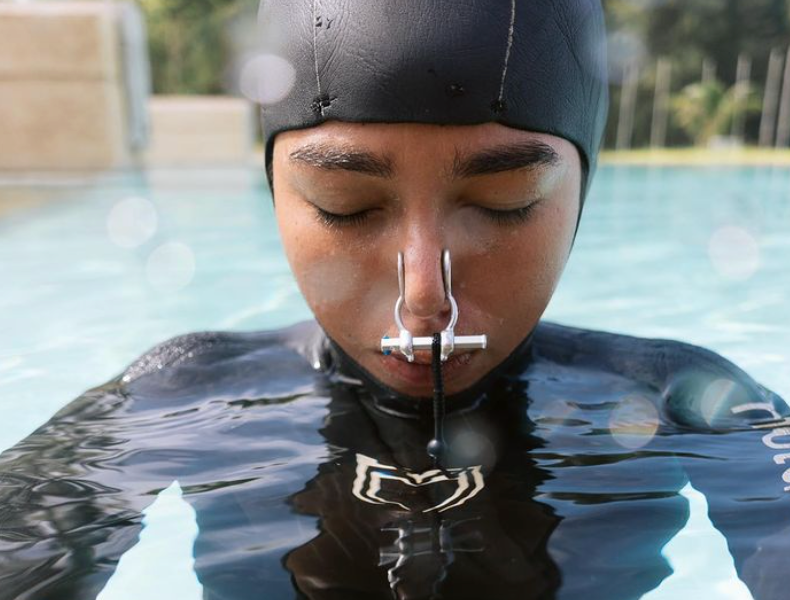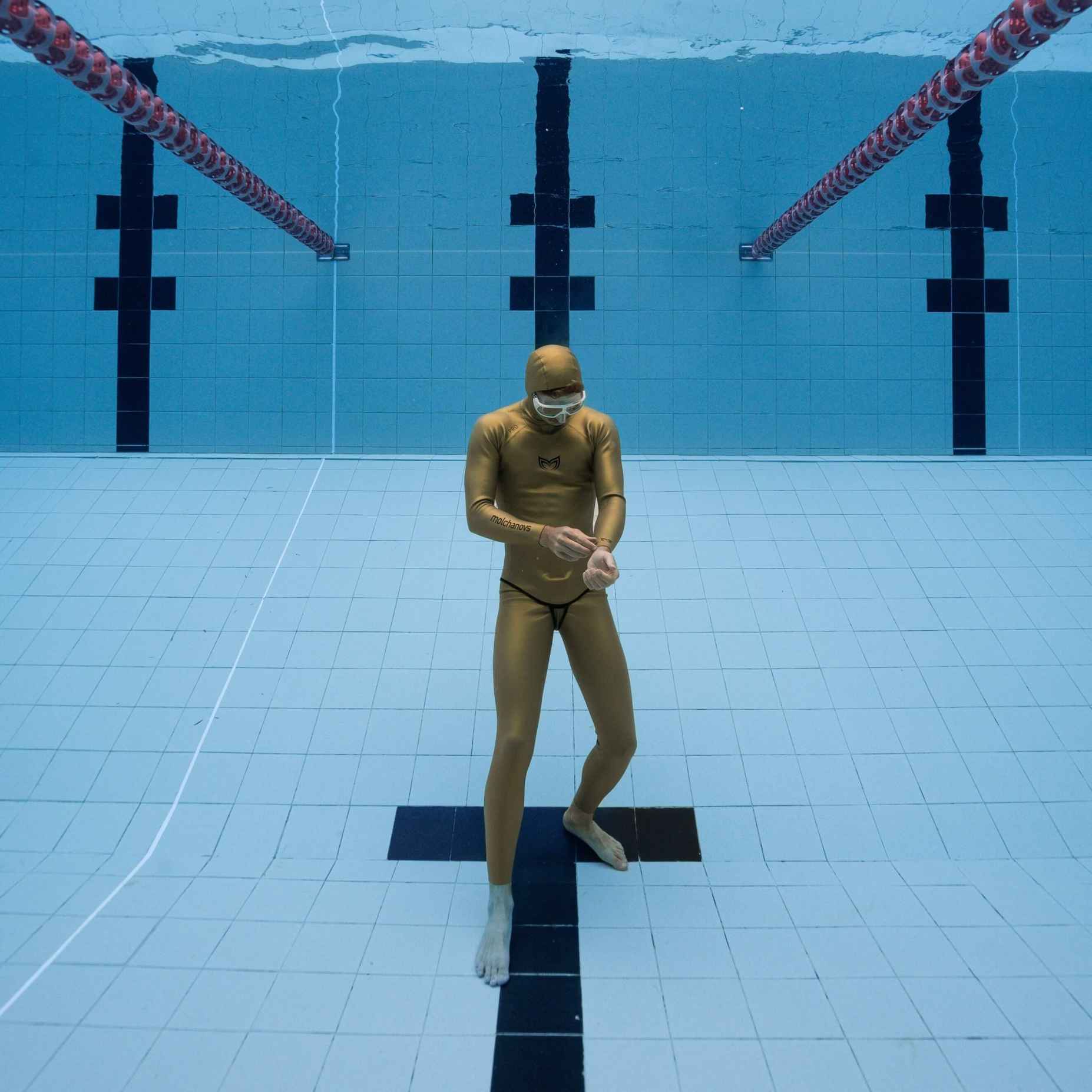6 Ways Training Static Improves Your Freediving Performance

By Kristina Zvaritch
Contributor: Florian Dagoury
Training your static breath-hold (STA) makes up only a small portion of your first freediving course. While some students do continue to train STA afterward since it is so easily accessible, others sometimes ignore it and see it as just a course requirement and nothing more. So why exactly would you want to keep training STA if you prefer dynamic or depth disciplines?
Training STA improves your freediving performance by increasing your tolerance to contractions, improving your lung capacity, honing your relaxation skills, developing your mind map for dealing with anxiety during your freediving performances, lengthening your dive times, and improving your quality of life in general.
Find out more about how breath-hold training boosts your overall freediving performance below!

Higher Tolerance to Contractions
Contractions are as much a part of freediving as breathing is to being alive. They are simply involuntary spasms of your diaphragm, which is your body’s way of signaling that it wants to release the built-up carbon dioxide you would usually be releasing while breathing. While contractions can feel uncomfortable at first, you shouldn’t fear them or try to avoid them. The more you train, the more you can teach yourself to tolerate higher levels of carbon dioxide. Training for longer STA performances helps you get used to contractions, which will translate into you feeling more comfortable during a breath-hold, even during your dynamic and depth dives. Imagine a person diving to 20-40m (66-131ft) with a 3-minute STA personal best (PB). This person will not be as comfortable on their dives as someone who can perform a 5-minute STA performance!
Increased Lung Capacity
While depth disciplines focus on flexibility to avoid lung injury and dynamic disciplines focus on hip, spine, and shoulder mobility, STA requires something a little different. In STA, you rely on how much your lungs can expand, which depends on the flexibility of your ribcage. When you perform long STA holds, your ribcage fully expands without contracting any muscles around the ribcage. This becomes a long passive stretch for all of the muscles around the ribcage. So with this increased lung capacity and more oxygen reserve (just from training STA!), all of your other freediving disciplines will benefit, which means less risk of hypoxia during your dives.
Improved Relaxation Skills
Relaxation is one of the most important aspects of freediving. Whether it comes to effective diving techniques, successful equalization, or a productive relaxation phase, the most critical component you need in every discipline is the ability to become and remain completely relaxed. When you train STA, this is the only skill you are working on, which forces it to develop much faster. This improved skill translates into other disciplines by allowing you to relax faster and on a deeper level.
Develop Effective Mind Maps for Anxiety
As freediving is a hugely mental sport, naturally, all disciplines create a level of mental anxiety. In depth disciplines, it usually occurs at the deepest part of the dive, while in dynamic performances, it steadily progresses as you swim further. Whether you know it or not, all freedivers (even you!) create a mind map when they feel anxiety while diving - they go from one thought to the next to accept overwhelming sensations and stay as calm as possible. While training other disciplines requires you to focus on equalization and technique, training STA is ideal for creating and developing effective mind maps because that is your only focus - no concentration on equalization or finning technique required!
Longer Dive Times
For those who are more interested in longer dives than deeper dives, training STA is an excellent way to achieve extended time underwater. Whether you are an aspiring underwater photographer/videographer, a spearfisher, or just enjoy fun diving and want to increase your bottom time to enjoy the view, putting more focus on STA in your freediving training will be a game-changer for your dives!
Improved Quality of Life
Training STA does not just have to improve your freediving - it’s excellent for your heart, breathing muscles, and teaches you how to deal with stress and anxiety, all of which will enhance your daily life.
Heart
STA provides a great workout for the heart muscle, which can increase stroke volume. Increased stroke volume means faster and more efficient transportation of blood and the nutrients it carries (including oxygen) with fewer heart contractions. STA is also good for vascular training - by increasing and decreasing blood pressure over and over again, the flexibility of the vascular system improves, which helps daily oxygenation of the muscles, organs, and tissues.
Breathing
Performing STA sessions regularly works out the breathing muscles - your diaphragm, intercostals, and neck muscles. This increases the flexibility and strength of these muscles and can help people breathe better and more efficiently.
Anxiety
As mentioned earlier, regularly training STA can lead you to learn how to relax faster and deeper. This skill can be used to improve your daily life above the water as well as below. By learning how to control anxiety during a breath-hold, you can use those same tactics to control stress anywhere - at home, work, in your interpersonal relationships. The possibilities are endless!
STA Challenge with Flo
If you want to get serious about training STA and improving your freediving overall, why not learn from the breath-holding expert himself? STA Challenge with Flo, a Base Training Plus program presented by Molchanovs, is designed to help freedivers increase their STA personal best times under the guidance of Florian Dagoury, famous for his incredible 10’30” breath-hold.
There are three separate programs for incremental improvement: 3-minute, 4-minute, and 5-minute STA Challenges, which should be approached consecutively (for example, if you have a 2’30” PB, you would start with the 3-minute program and then work your way up). Flo will share with you his 30-minute daily routine that includes stretching, meditation, and breath-holds, which you can incorporate into your morning routine to improve your overall freediving performance - no matter the discipline.
Learn more about STA Challenge with Flo
To get more information on STA Challenge with Flo as a Molchanovs Movement member, access Molchanovs Base Training Plus from the Dashboard.
If you are not yet a Molchanovs Movement member, you can purchase Flo' STAtic Challenger here.




Leave a comment